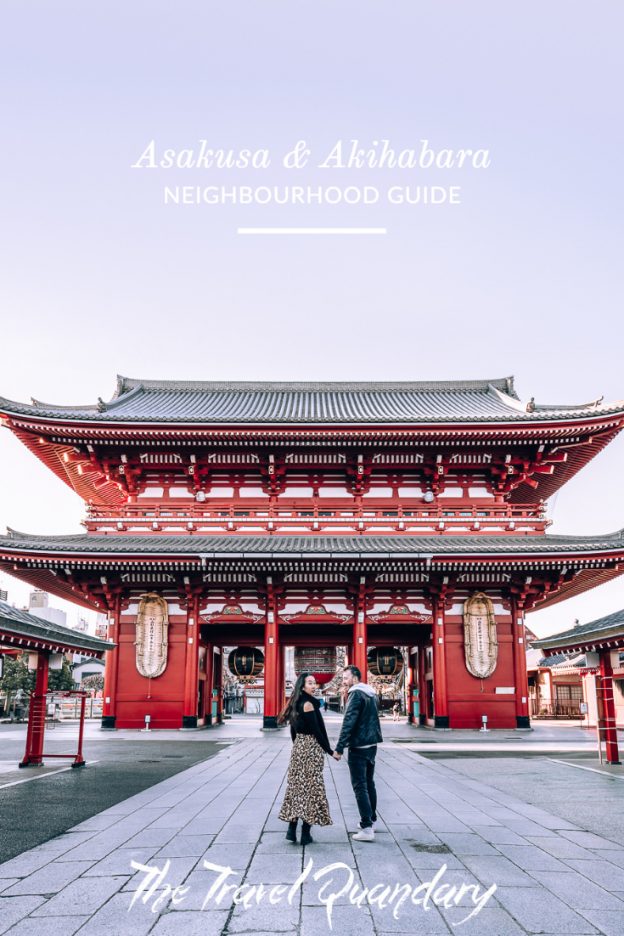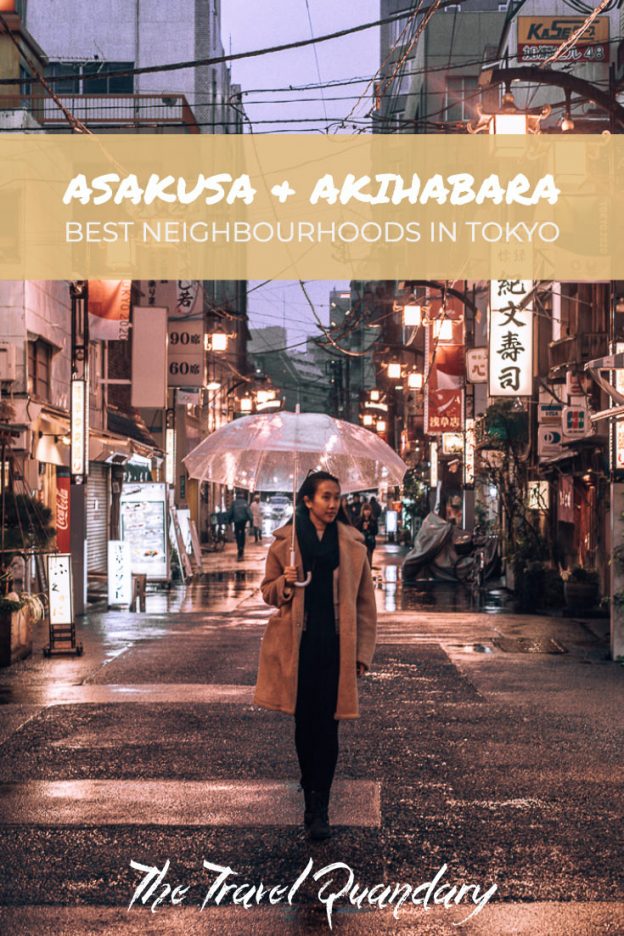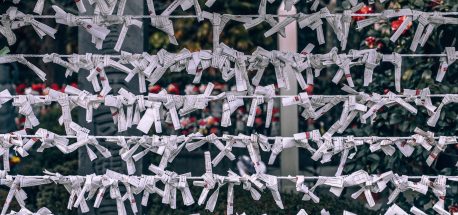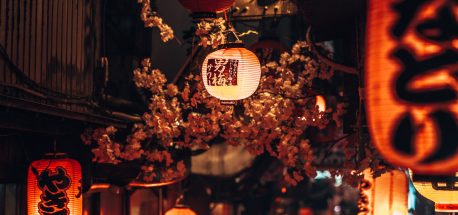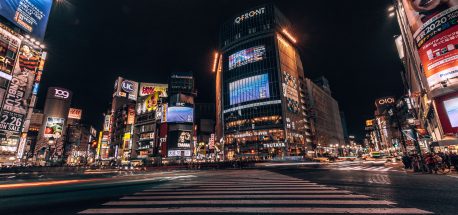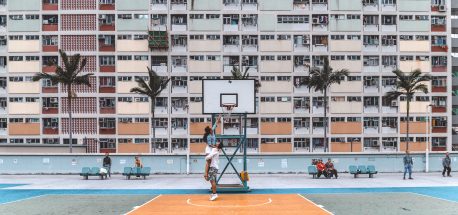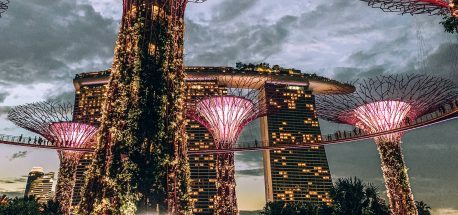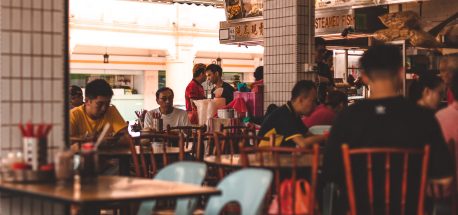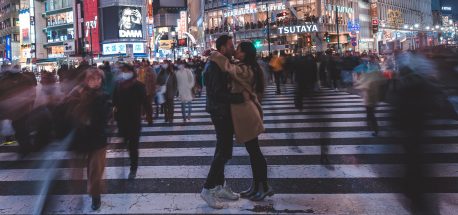Nowhere is Japanese modernism more evident in Tokyo than the district of Taito City. Home to two of the most popular neighbourhoods in Tokyo, Asakusa and Akihabara, these boroughs showcase vastly different aspects of Japanese culture.
Asakusa retains the vibe of an older Tokyo. Visitors come to admire the iconic ancient centrepiece of the neighbourhood, Senso-ji Temple, before losing themselves in the backstreets lined with traditional craft stalls and casual izakayas. The young flock to the flashing lights of Akihabara, where anime and cosplay rules. Hunt for your favourite childhood comics, order tea at a maid cafe and lose a few coins whilst trying to win a fluffy toy in the arcades.
Our Asakusa & Akihabara neighbourhood guide will lead you to places that celebrate Japanese culture and cuisine. Read on to discover where to eat, what to see and what to do in Asakusa and Akihabara.
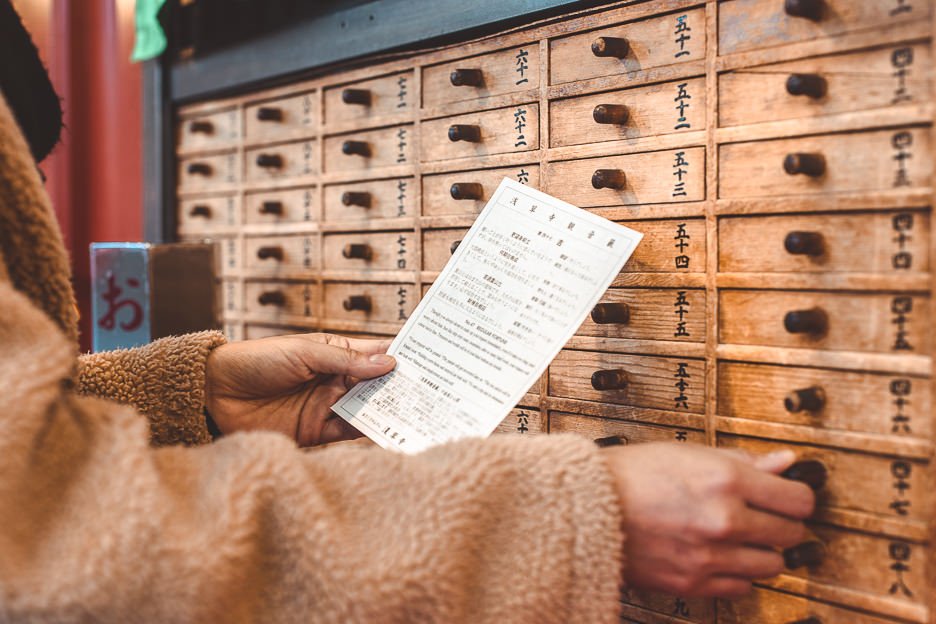
a quick guide to akihabara & ASAKUSA TOKYO
WHAT TO DO IN ASAKUSA & AKIHABARA
Asakusa is famous for the ancient Senso-ji Temple. To get to Senso-ji Temple, start your walk from Kaminarimon Gate Senso-ji. From this point, you’ll pass under the first of two lanterns. Continue walking along Nakamise-Dori and you will pass by vendors selling souvenirs and trinkets until you reach the second gate, the Hozomon. Outside the temple, you can draw your fortune for ¥100. Place a coin into one of the slots, shake the metal container of wooden chopsticks and draw your fortune (omikuji) from one of the wooden drawers.
In neighbouring Sumida, you cannot miss TOKYO SKYTREE. At 450 metres, it is the highest observation deck in Tokyo with 360 degree views of the metropolis. Ueno Park is a popular place to go walking within the urban sprawl. Inside the park, you’ll find Gojoten Shrine and Ueno Toshogu Shrine, both Shinto shrines. Ueno Park is also home to Ueno Zoo.
Akihabara is the gaming district where animated superheroes and characters are plastered over billboards, building facades and shopfronts. Prepare to lose a few coins playing arcade games and feel nostalgic thumbing through comic classics in basement shops.
THE BEST JAPANESE RESTAURANTS IN ASAKUSA & AKIHABARA
Our go to snack food in Tokyo was onigiri (not to be confused with ngiri). These little triangular pockets of rice are super simple to eat on the go but if you prefer to enjoy yours whilst sitting down, the best place to visit is Onigiri Asakusa Yadoroku. Here, onigiri is served for both lunch and dinner or until the rice is sold out, so ensure to get in early.
Another Japanese favourite is gyoza. In our opinion, the best spot to order a plate of freshly made dumplings in Asakusa is Gyozano Osama. It’s likely you’ll be ushered upstairs where most of the tables are but make sure to take a peek at the kitchen on the ground floor where you can see the gyoza being prepared – all by hand!
There are some slippery little suckers on the odd menu too. Eating dojo nabe won’t appeal to everyone but if you’re game to try some cooked loaches (similar to eel), you’ll find the dish being served at Dozeu Iidaya. Otherwise for something a little more familiar (and stomachable), sit down for a fried pork cutlet at Tonkatsu Yutaka or deep-fried battered vegetables at Tempura Tensuzu.
For die-hard foodie fans, this Asakusa evening tour offers a unique cultural experience you are unlikely to encounter on your own!
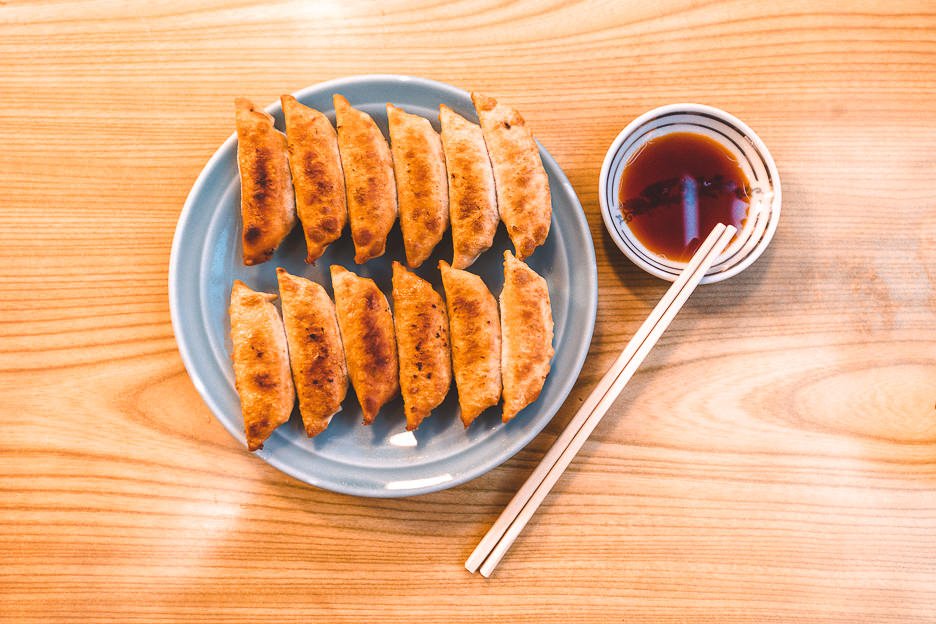
THE BEST BARS IN ASAKUSA & AKIHABARA
If you’re looking to dance all night long, the best nightlife in Tokyo is found in Shibuya or Shinjuku. For a less rowdy scene, look skywards above the streets to some of the hotel bars in Asakusa. The lobby bar at the Wired Hotel is where millennial travellers mingle while you can watch day turn to night from the balcony of T Terrace at The Gate Hotel Kaminarimon by HULIC. This 14th floor bar offers an uninterrupted view of Tokyo SKYTREE.
Craft beer drinkers will feel right at home at Asakusa Beer Kobo. If you are wanting to save a few dollars, keep your ¥500 Japanese Yen coins handy. At Ueno 500 Bar, almost everything on the menu is ¥500 (a single coin). This coin bar is one of the best in the area and it doubles as an Italian restaurant. You can dine in for some Roman-style pizzas if you need a night off from Japanese cuisine.
For fans of retro games, Game Bar A-Button is the place for you. With classics like Gameboy and Pacmac inside, challenge yourself or some friends to some old school classics accompanied with a few beers of course.
THE BEST CAFES IN ASAKUSA & AKIHABARA
Fuglen Asakusa (see also Shibuya) offers a contemporary cafe atmosphere whilst serving specialty coffee. The coffee shop is not too far from Senso-ji and so is a solid option to begin a day of exploring the neighbourhood. On the other side of Senso-ji temple, you’ll find Feb’s Coffee & Scone.
If you’re choosing to make your way to Akihabara from Asakusa above ground, make a pit stop at From Afar or Leaves Coffee Apartment. Your feet and energy levels will thank us for the rest break!
For something a little different and kitsch, step inside a maid cafe in Akihabara. Cue young Japanese girls literally dressed up in maid costumes who are working waitresses serving customers food and drinks. Maid cafes are a huge part of Japanese Otaku culture and some spots such as Pinafore have become more famous thanks to features on Japanese television.
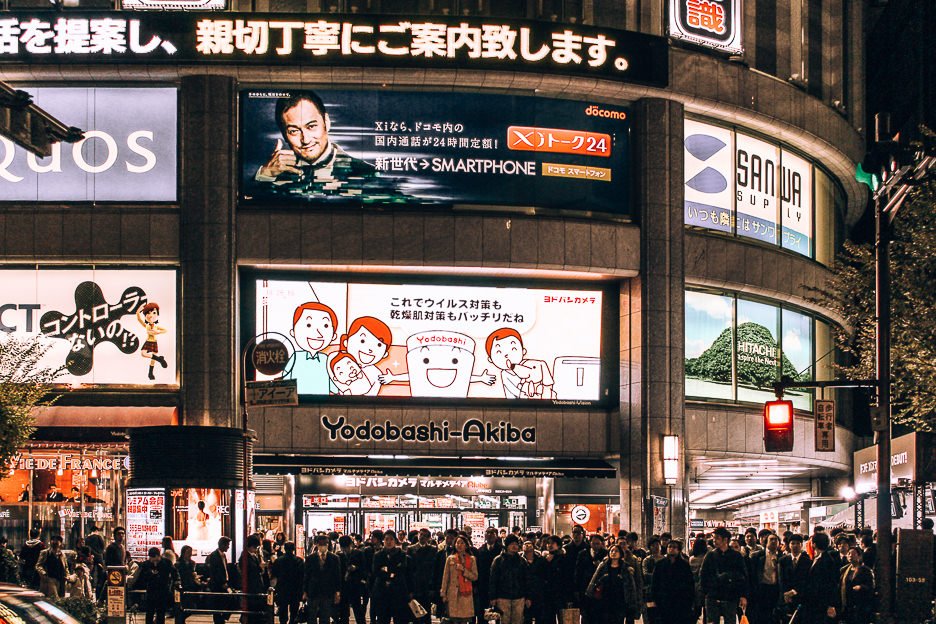
BEST SHOPPING IN ASAKUSA & AKIHABARA
Akihabara is Tokyo’s gaming district, best known for its neon lights, arcade games, comics and video games. The neighbourhood is also a mecca for electronics. Amateur and professional photographers would be wise to compare prices across a couple of stores before finalising any purchases. Yodobashi Camera Multimedia and BIC Camera are two of the larger retailers to use as a baseline.
Underneath Akihabara Station and the railway line is where you will find unique souvenirs or gifts from Japan. 2K540 Aki-Oka Artisan is a collective of 50 boutique shops selling handcrafted jewellery, leather and more.
As you’re likely to visit Senso-ji Temple whilst in Asakusa, you will not miss Nakamise Shopping Street. This main thoroughfare is an ideal spot to pick up a few trinkets and if you buy in bulk, you may even be able to negotiate a small discount. For a traditional Japanese cooking knife, wander a little further until you reach Cutlery Tsubaya. The shop assistants will be able to present many fine blades if you’re keen to add to your kitchen arsenal.
WHERE TO STAY IN ASAKUSA & AKIHABARA
Asakusa is one of the oldest neighbourhoods in Tokyo and serves as a wonderful base for exploring Japan’s capital city. Our most recent stay in Tokyo included two nights at The GATE HOTEL Kaminarimon by HULIC, located a stone’s throw from Senso-ji Temple. Alternatively, you can choose to stay in a Japanese style room at Prostyle Ryokan Tokyo Asakusa where some rooms feature a private onsen style bath.
There are plenty of budget friendly accommodation options too. We chose to spend a night at Nui. Hostel & Bar Lounge in one of their private doubles but can also recommend Backpackers Hostel K’s House Tokyo
If you’re drawn to the bright lights of Akihabara, Glansit Akihabara is the perfect option for you for a night or two. The capsule hotel offers the bare necessities and is within walking distance of Akihabara train station. For those wanting a little more space, the Artist Hotel – BnA STUDIO Akihabara offers a hotel experience that compliments its surroundings.
SAVE OUR ASAKUSA & AKIHABARA MAP
PLANNING YOUR VISIT
How do I get to Asakusa?
Train from Narita Airport to Asakusa
To get from Narita Airport to Asakusa, you will need to catch
Option 1: Skyliner (to Ueno Station) ~¥2,520
Option 2: Skyliner > Ginza Line ~¥2,690
If you’re not planning on booking accommodation in Asakusa or Akihabara, you can easily visit the area for the day using Tokyo’s extensive metro network.
From Shinjuku Station to Asakusa
Via Subway on Oedo Line (33 mins) ~¥260
Via Subway on Shinjuku Line > Asakusa Line (22 mins) ~¥430
From Shibuya Station to Asakusa
Via Train on JR Yamanote Line (33 mins) ~¥350
Via Subway on Ginza Line (38 mins) ~¥230
From Ginza Station to Asakusa
Via Subway on Ginza Line or Hibiya Line (32 mins) ~¥200
From Tokyo Station to Asakusa
Via Subway on Ginza Line (36 mins) ~¥200
Via Train on JR Yamanote Line > Bus 26 or Bus 41 (30 mins) ~¥370
How far is Asakusa from Shinjuku?
The two neighbourhoods are only 8 kilometres apart. Using Tokyo metro, the journey time from Asakusa Station to Shinjuku Station is around 30 minutes with one line change required in the middle.
What is the best time to visit Asakusa?
If you want to avoid the crowds, arrive early in the morning to have Senso-ji Temple and the surrounding grounds to yourself. The temple grounds are open air and free admission. The shops located around the temple do not open until mid morning so complete your temple visit and watch Japanese locals praying before exploring the greater area.
Share your top recommendations for what to do in Asakusa & Akihabara!
LIKE THIS POST? PIN IT AND SHARE IT!
